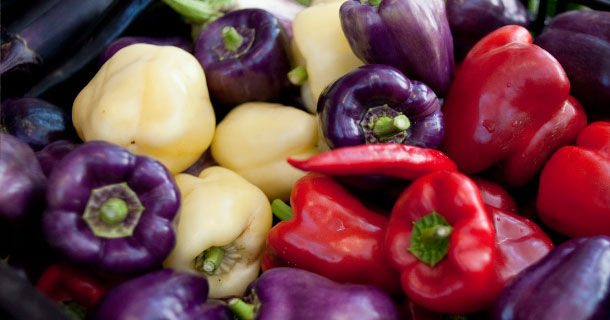While patterns of consumption depend significantly on personal choices, the public policies for land use, transportation, and many other issues in the GO TO 2040 plan influence the effectiveness and sustainability of our food systems. To benefit the region's economy and the health of its residents, GO TO 2040 addresses the separate but related factors of food production and access.
Food Production
"Local" food—which is grown, processed, packaged, and distributed on land in or adjacent to our seven counties—can contribute to a sense of community and regional identity. Farming practices, food distribution, and waste disposal should all be sustainable, meeting our present needs without compromising the future.
Local production of and equitable access to fresh, nutritious, and affordable food can benefit our economy, environment, public health, equity, and overall quality of life. From commercial farms to community co-ops and even backyard gardens, emphasizing local food production and access can help to preserve farmland in traditionally agricultural communities or to revitalize neighborhoods by bringing agriculture to vacant, unused parcels in urban settings where it is usually absent.
Food Access
In most of our region, residents can buy food in large full-service groceries, smaller specialty shops, or even corner fruit stands. Increasingly prevalent neighborhood farmers' markets are becoming social gathering spots where consumers can meet the people who grow their food.
Yet in parts of our seven counties, too many people lack access to nutritious food—putting them at increased risk for obesity, diabetes, and other nutrition-related conditions. Nine percent of our region's residents live in "food deserts" without a nearby grocery. Instead of eating fresh, affordable food, they may depend on the closest convenience store where prices are high and nutrition is low. Distance to the nearest grocer has been correlated to increases in cancer, cardiovascular disease, diabetes, and liver disease, especially in African American communities.
The region should pursue strategies that increase access to fresh food and that build public awareness of good nutrition, especially in food deserts. For example, expanding arrangements between local food producers and food banks would make fresh products more accessible to low-income people. So would permitting farmers' markets, community-supported agriculture, and nontraditional retail food outlets to accept hunger assistance benefits.
Often, addressing food production and access requires different policy solutions—for example, people need access to fresh, nutritious, affordable food no matter where it is produced. But some policies, such as urban agriculture projects in food deserts, can address both production and access.
